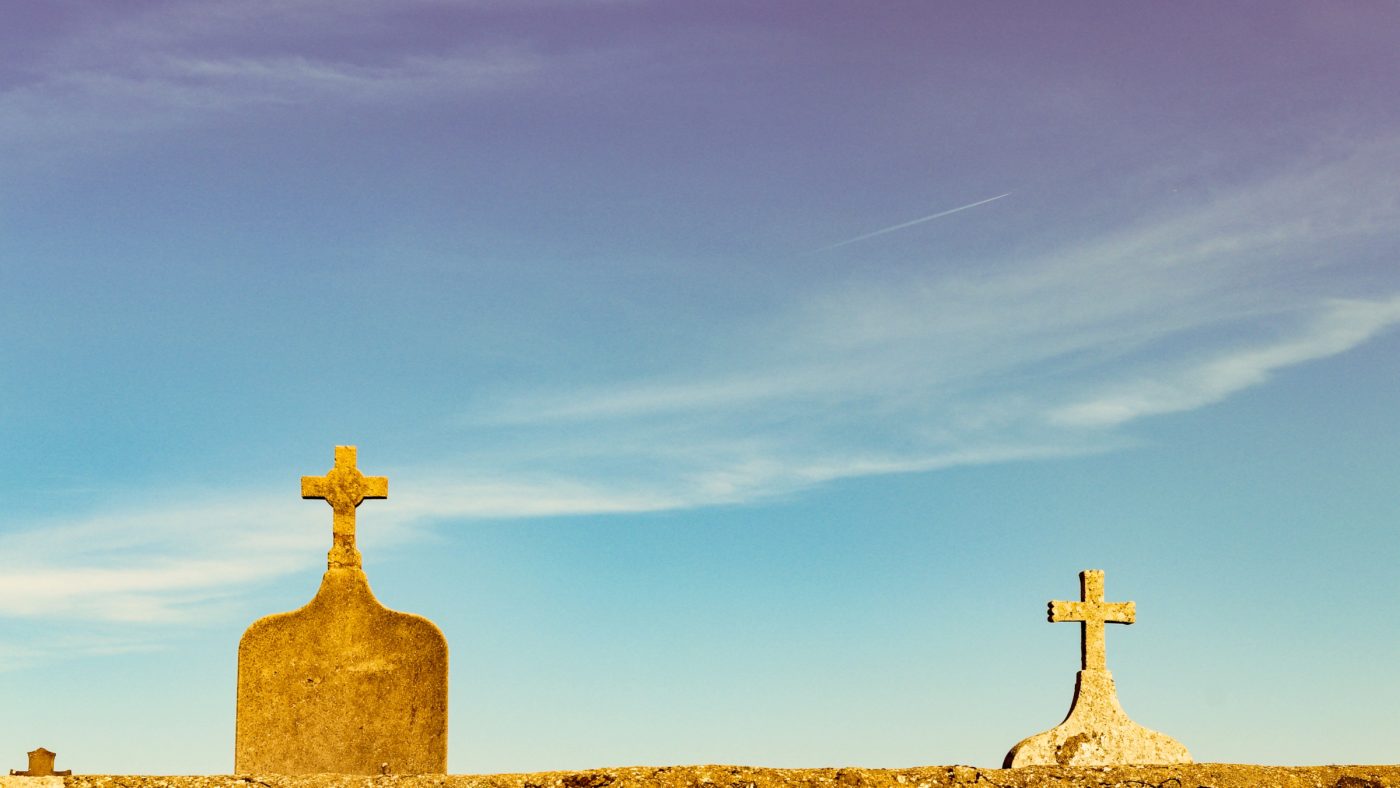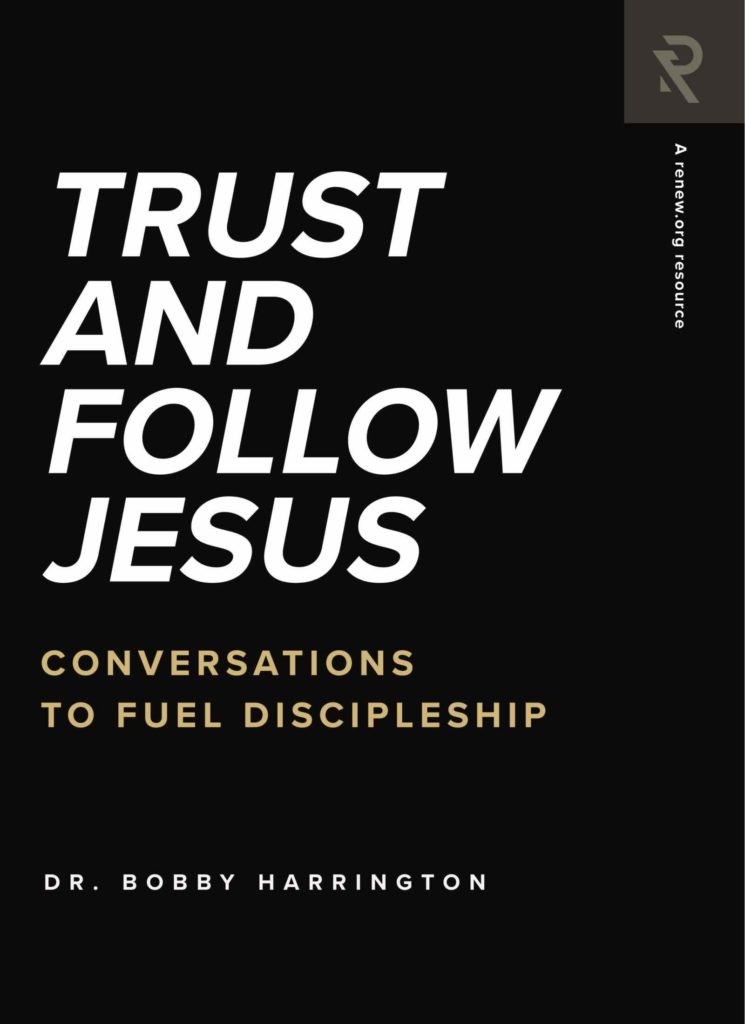
There Are Two Crosses in the Life of a Christian
There are two crosses in the life of every true Christian: the cross on which Jesus suffered and died, and the cross on which we must suffer and die to self. Receiving Jesus is free; we need only to accept His free gift of eternal life. To do that, however, we must repent, turn from our own way to His way, and follow Him. And the path of following Jesus always passes through suffering and death in this world.
The upside-down nature of the Kingdom is, by definition, a test of faith. It requires us to live by faith rather than by sight. In Philippians 3:10, Paul declares that the only way we can know the Lord, be identified with Him, and share His life is through also sharing in the “fellowship of His sufferings” and His death. In 2 Timothy 3:12, Paul gives a rarely quoted Bible promise: “All who desire to live godly in Christ Jesus will be persecuted.”
Jesus already paid the price to cover our guilt and shame when He died on the cross. However, the pathway of a Theopraxic life has a second cross: our own. The disciples struggled to understand the two crosses. . . .
We see the disciples’ distorted understanding in Mark 8:31–33, as Jesus begins to describe His forthcoming suffering and death and resurrection.
Peter, who has just recognized Jesus as the Messiah, immediately reprimands Him! That is an amazing action, one that required considerable hubris on Peter’s part. In response, Jesus rebukes Peter, whom He has just praised, saying, “Get behind Me, Satan; for you are not setting your mind on God’s interests, but man’s” (Mark 8:33).
The fact that Jesus refers to Peter as Satan shows how seriously He takes the matter. He contrasts God’s interests and man’s. Man’s interests are in power and glory, comfort and ease. That is the path down which Peter wanted Jesus to lead them. God’s interests are something different altogether—the path of suffering, death, resurrection, and glory.
Then Jesus proceeds to teach the Twelve and the crowd about the cost of following Him (Mark 8:34–38). “If anyone wishes to come after Me, he must deny himself, and take up his cross and follow Me” (v. 34). One cannot serve God and the things of this world too. This was the message Peter was not ready to hear or accept.
This is the message of the second cross—our cross.
The Transfiguration (Mark 9:1–13) further reconfirms Jesus’ identity as the Christ. Peter, always talking—especially when he doesn’t know what to say—suggests that they build tents and stay on the mountain. He wants to hold on to this mountaintop experience. Jesus brings him back down to earth, reiterating that the Christ “will suffer many things and be treated with contempt” (v. 12) and rise from the dead (v. 9). The cross is again brought to the forefront.
Mark 9:14–29 describes the healing of a demon-possessed boy. The disciples ask afterwards why they had been unable to cast out the demon. Jesus replies that this can only be accomplished by prayer and fasting (see also Matt. 17:21), again highlighting the need for self-denial. He intends for His deliverance to come not by a triumphalistic process but through prayer, humility, and sacrifice, in complete dependence upon the Father.
Jesus then reiterates the necessity of His suffering, death, and resurrection, as if determined to help His disciples understand this central aspect of His ministry. “The Son of Man is to be delivered into the hands of men, and they will kill Him; and when He has been killed, He will rise three days later” (Mark 9:31). But the disciples were afraid and wanted Him to quit talking about death (Mark 9:32).
In Mark 9:33–37, the disciples immediately display their total lack of comprehension of Jesus’ message, as they argue about which of them is the greatest.
Jesus responds, “If anyone wants to be first, he shall be last of all and servant of all” (v. 35). In speaking to them again about humility and servanthood, He highlights that in His Kingdom serving others, not being served, is the sign of greatness. The idea of the second cross, the cross of the follower, is as abhorrent to the disciples as the first, the cross of Jesus. . . .
Then, in Mark 10:17–31, we have the account of the rich young ruler who asked Jesus, “Good Teacher, what shall I do to inherit eternal life?” They talked back and forth, and finally, “Looking at him, Jesus felt a love for him and said to him, ‘One thing you lack: go and sell all you possess and give to the poor, and you will have treasure in heaven; and come, follow Me’” (v. 21). The young man departed sadly, because he was very rich.
Jesus loved this young man, but the young man had things backwards; he valued riches more than Jesus. So Jesus gave him a choice. He could keep his riches or he could sell all, follow Jesus, and gain treasure in heaven. Jesus pointed this young man toward the second cross. But the rich young man chose not to pick it up, and instead went away sad. Unless we understand the two crosses, we will value the wrong things.
We live in the temporary shadows cast by lesser desires instead of in the blazing glory of our eternal King.
In Mark 10:23, Jesus speaks of how hard it will be for the wealthy to enter the Kingdom of God. The disciples seem rattled by Jesus’ exchange with this young man, so Jesus repeats Himself. They are confused, asking in Mark 10:26, “Then who can be saved?” They still cannot comprehend the two crosses.
One can sense from Peter’s comment in Mark 10:28, “Behold, we have left everything and followed You,” that he feels off balance and wants to make sure he is safe in this strange world Jesus is describing. Jesus affirms Peter’s sacrifice: “Truly I say to you, there is no one who has left house or brothers or sisters or mother or father or children or farms, for My sake and for the gospel’s sake, but that he will receive a hundred times as much” (10:29–30a).
But then Jesus adds something Peter is not expecting: “along with persecutions; and in the age to come, eternal life” (10:30b).
Jesus concludes by reiterating the upside-down nature of His Kingdom: “Many who are first will be last, and the last, first” (10:31). I imagine that Peter felt even more disoriented because Jesus unexpectedly included persecution in the package that comes with following the Messiah.
The correct path is marked by sacrifice and service rather than glory and ease.
In Mark 10:32–34, for the fifth time since Mark 8, Jesus clearly tells the disciples about His upcoming suffering, death, and resurrection: And again He took the twelve aside and began to tell them what was going to happen to Him, saying,
“Behold, we are going up to Jerusalem, and the Son of Man will be delivered to the chief priests and the scribes; and they will condemn Him to death and will hand Him over to the Gentiles. They will mock Him and spit on Him, and scourge Him and kill Him, and three days later He will rise again.”
Immediately afterwards, James and John come to Him, asking for the best seats in the coming Kingdom.
Jesus’ frustration is apparent in His response: “You do not know what you are asking. Are you able to drink the cup that I drink, or to be baptized with the baptism with which I am baptized?” (Mark 10:38). But that is not enough to prevent the rest of the Twelve from leaping into the fray, because they want to be the greatest as well. One more time, Jesus repeats His lesson about humility, servanthood, and sacrifice being the marks of greatness in the Kingdom (Mark 10:42–45).
Not until after the resurrection do Peter and the others understand both crosses. Peter preaches about the first cross at Pentecost (Acts 3:18) and writes about the second cross eloquently in 1 Peter 2:21: “For you have been called for this purpose, since Christ also suffered for you, leaving you an example for you to follow in His steps.” He continues in the same vein in 1 Peter 4:12–13:
“Beloved, do not be surprised at the fiery ordeal among you, which comes upon you for your testing, as though some strange thing were happening to you; but to the degree that you share the sufferings of Christ, keep on rejoicing, so that also at the revelation of His glory you may rejoice with exultation.”
Unless we recognize both crosses when we speak, it is probably better that we not speak at all.
If we omit either His cross or our cross, we are not accurately representing the gospel of the Kingdom. We are called to suffer, and we identify with Christ through our suffering. Glory and honor in abundance will come our way for all eternity, but there is no shortcut.
While Jesus was tempted in the desert (Matt. 4:1–10), Satan offered Him a series of shortcuts. Jesus rejected them, choosing instead to walk the path of the cross that the Father had marked out for Him. We must do the same.
Glory and honor in abundance will come our way for all eternity, but there is no shortcut.
As I observe Jesus’ patience with the Twelve over the course of Mark 8–10, I shake my head in wonder at their slowness to comprehend. Then I consider myself. I have had decades to learn elementary lessons that I have not yet mastered. I have had so many advantages. I have access to Scripture and many other spiritual resources. I grew up in a godly family. I have interacted with many mature saints. And yet I still have much growing to do. Jesus is indeed patient. I need to be equally patient with others.
We live in an upside-down Kingdom. We need to keep our eyes on eternal realities, not on earthly shadows or momentary and light afflictions. That is what we can expect when we’re walking by the Spirit. If we’re preoccupied by other concerns, we are on the wrong path. The correct path is marked by sacrifice and service rather than glory and ease.
(Excerpted from Curtis Sergeant, The Only One: Living Fully In, By, and For God. For more from Curtis, check out theonlyonebook.com.)









